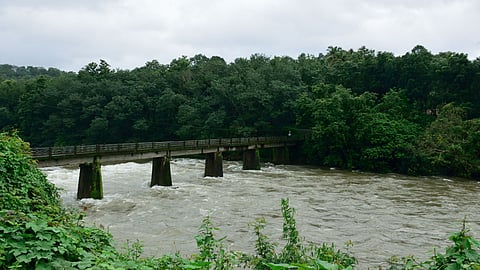

# Ajayan
The mysterious underground sounds that have been happening in Chenappady village in Kottayam district do not pose any immediate threat, according to geological experts. However, they say there is the need for immediate ground-level studies and in case of some higher level of sound, there is the need to caution people.
Deafening sounds were heard twice in the wee hours of Friday similar ones were heard in Chenappady and some neighbouring places earlier this week too, said people there. But they also admitted that no visible change was noticed on the land.
Leading geologist John Mathai, who was earlier with the National Centre for Earth Science Studies, told Metro Vaartha that such crushing sounds are a regular occurrence in Kerala and nothing unique to Chenappady.
Kerala has deep-seated fracture zones which are called lineaments or linear feature on the earth’s surface such as a fault. These can be identified from satellite images. The Western coast of India is an emerging area which is slowly getting uplifted. This uplifting is the result of direct force within and along the coastal margin. There are some small movements as part of this where the rocks get crushed. To put it plainly, John Mathai says it is like the movement of slabs. If one slab moves and rubs against another, the edges get rubbed and there is sound. This crushing of rocks, moving in some definite direction, creates some sound which comes out as acoustic emission. This is regularly happening in different areas of Kerala, mostly along this deep-seated fracture line.
Around the 1850s, this area in Kottayam was known to be a seismically active zone, John Mathai points out. For another 100 years nothing happened and there was some mild activity in 1953. Again in 2001 serious activity occurred in the Erattupetta side. Incidentally, Erattupatta and Chennappady are at a distance of around 20 km aerially, which is very close according to standards of geologists.
These can be indications of a larger movement in future. But as far as Kerala is concerned, any stress built up goes out as some small tremors and there are no big damaging earthquakes, he points out.
But these sounds are an indication of some lineament getting active. There is a major zone from Muvattupuzha and gets connected in a north-west direction. There Is a dyke in between with a different rock type which occurs as a linear body. Because of the contrasting rock properties, if stress develops, there can be this crushing sound.
On the threat of landslides, he said it was probable on the Mundakkayam side. The area in question is between Ponkunnam and Kanjirappilly along the Manimalayar river. It is a rugged terrain with hills and linear valleys and as of now there is no threat.
CP Rajendran of the Indian Institute of Science in Bengaluru and leading geologist, who has worked mainly on the Indian earthquakes and tectonics, told Metro Vaartha that such rumblings are common across Kerala and several other areas. He points to the riverine conditions of Chennappady and its surroundings and the recent rain. Incidentally, the area had been ravaged during the devastating 2018 floods.
As a result of the recent rain and water flowing into the Manimalayar river, there could be changes in the groundwater level and some erosion due to this, Rajendran points out. Nothing is noticeable on the surface level. This erosion happens internally. It also calls for deep and wide scientific studies, he says.
Groundwater movement through the fracture zone and acting as a lubricant can see some action take place. Scientists have to undertake field studies to categorise this. Sounds and signals sent out from deep-seated fractures or those related to groundwater movement are different. They have to be analyzed to see how prone the areas are to disasters and what management steps have to be taken.
